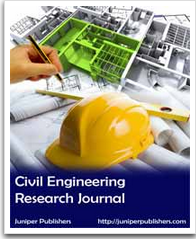Assessment of Different Intersection Designs to Accommodate Left Turns Through Indirect Maneuvers- Juniper Publishers

Civil Engineering Research Journal- Juniper Publishers Abstract Although there are studies that compared between indirect left-turn treatments such Median U-turn (MUT) or RCUT to the Conventional Intersection (CI) designs, very few have compared between the operational performances of MUT versus RCUT. Furthermore, few studies on the Quadrant Roadway Intersection (QRI) were found in the literature. The main objective of this paper is to assess different designs for the accommodation of left turns through indirect maneuvers. Traffic performance of the proposed intersection designs was evaluated based on microsimulation. The results revealed that the difference between the two designs, RCUT and MUT lies in the amount of traffic rerouted to the crossover intersections. Increasing the traffic downstream of the main intersection to the crossover intersection still has an effect on the main intersection’s operations. Proper design and spacing is needed at the crossover intersection to mi...

